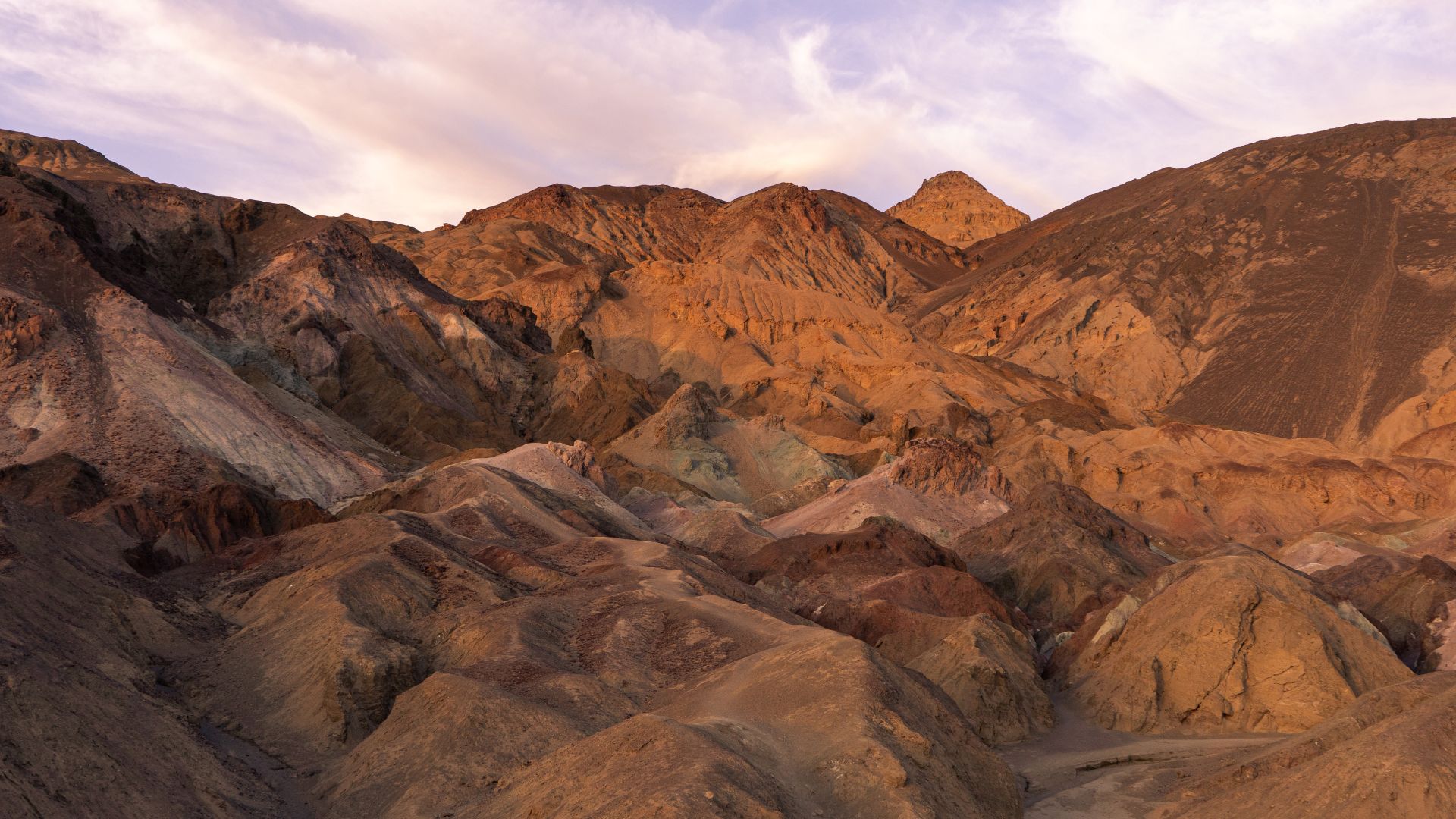Standing at Zabriskie Point in Death Valley National Park while the sun rises always feels peaceful. Every time I come back, I can’t help but get excited for that first soft light spilling over the Amargosa Mountains.
As dawn breaks, the badlands below shift fast—from deep gray shadows to warm gold and amber. The colors sweep across the hills, painting the unique textures that make this spot so famous.
I’ve noticed sunrise here draws not just photographers, but anyone who wants to see the desert wake up. The quiet air, endless layers of hills, and those panoramic views make Zabriskie Point one of my favorite places to greet the day in Death Valley.
No long hike is required. A short, paved trail leads up to the overlook, and suddenly, the striped hills of the badlands, the flat valley floor, and the distant Panamint Mountains all come into view.
It’s honestly a picture-perfect moment, and I get why so many people fall in love with this place.

Experiencing Sunrise at Zabriskie Point
Before dawn, Zabriskie Point feels almost silent. I stand there, taking in the cool air and the subtle changes as the sun creeps higher.
Each minute, the badlands pick up new color and definition. The shifting light, the wild landscape, and the sense of calm make this sunrise feel special.
The Magic of Golden Badlands
As the first sunlight hits, the famous striped badlands turn gold, amber, and even pink. The view stretches over twisting ridges, deep gullies, and the distinct shape of Manly Beacon.
Colors change fast, so I always try to arrive early. From the overlook, I spot the salt flats below and the Panamint Mountains far off.
The gold hills against the blue shadows look almost unreal. This early light brings out every detail of the eroded slopes.
Even with plenty of people around, the mood stays hushed. Cameras click, people whisper, and no one wants to break the spell.
It feels like I’ve stumbled into a secret moment, just watching Death Valley reveal itself.
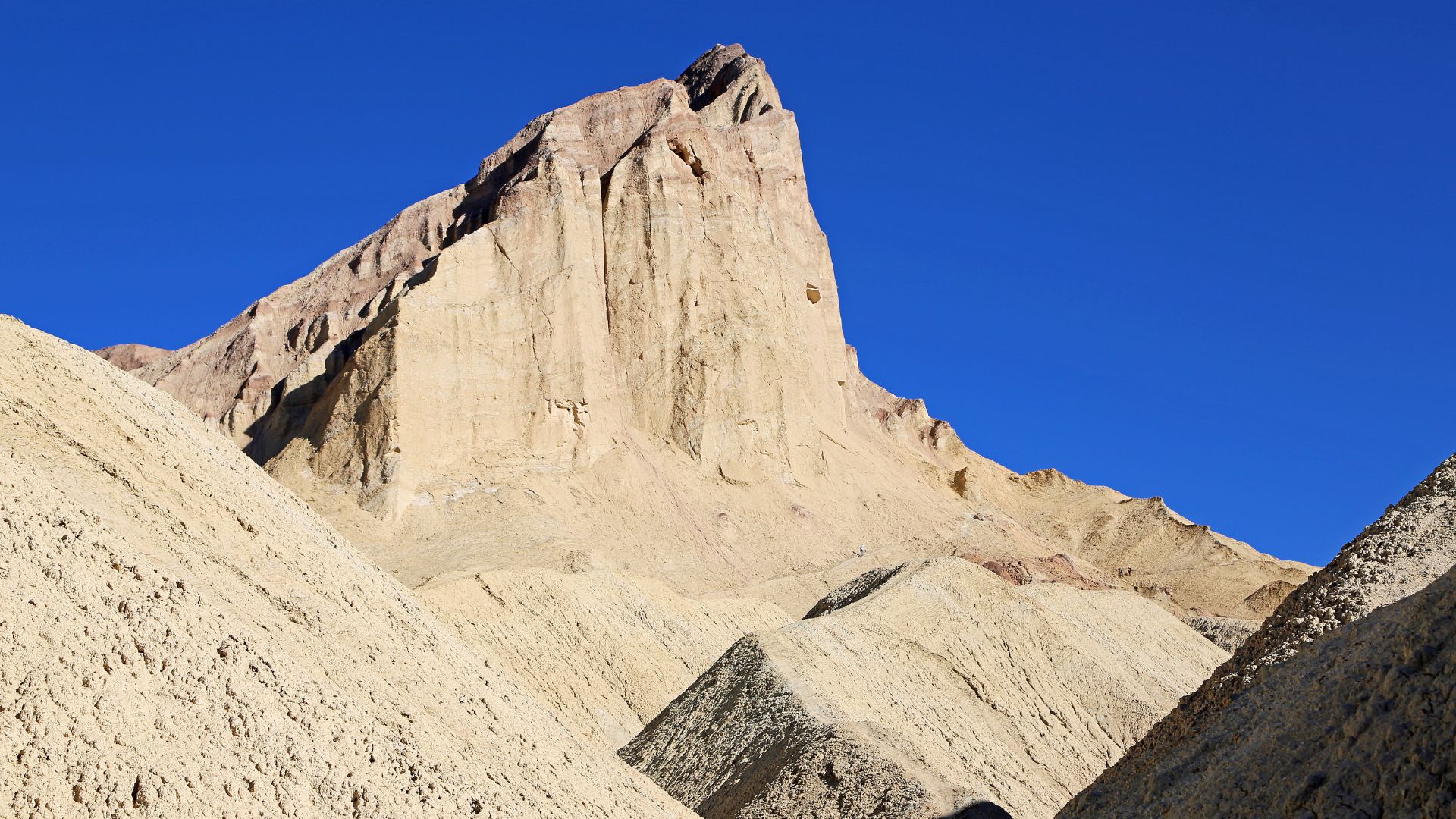
Best Time to Visit for Sunrise
I aim to get to Zabriskie Point 30–45 minutes before sunrise. That way, I can find a good spot and catch those first hints of light.
Parking fills up quickly, especially on weekends or during the cooler months from November to March. The best colors usually appear just as the sun crests the Amargosa Mountains.
Sunset is nice too, but sunrise wins for me—less crowded, more dramatic colors, and a kind of quiet you don’t find later in the day.
Mornings can be chilly, even in Death Valley. I always bring a light jacket. Cell service is basically nonexistent, so I download any maps or trails beforehand if I plan to hike after sunrise.
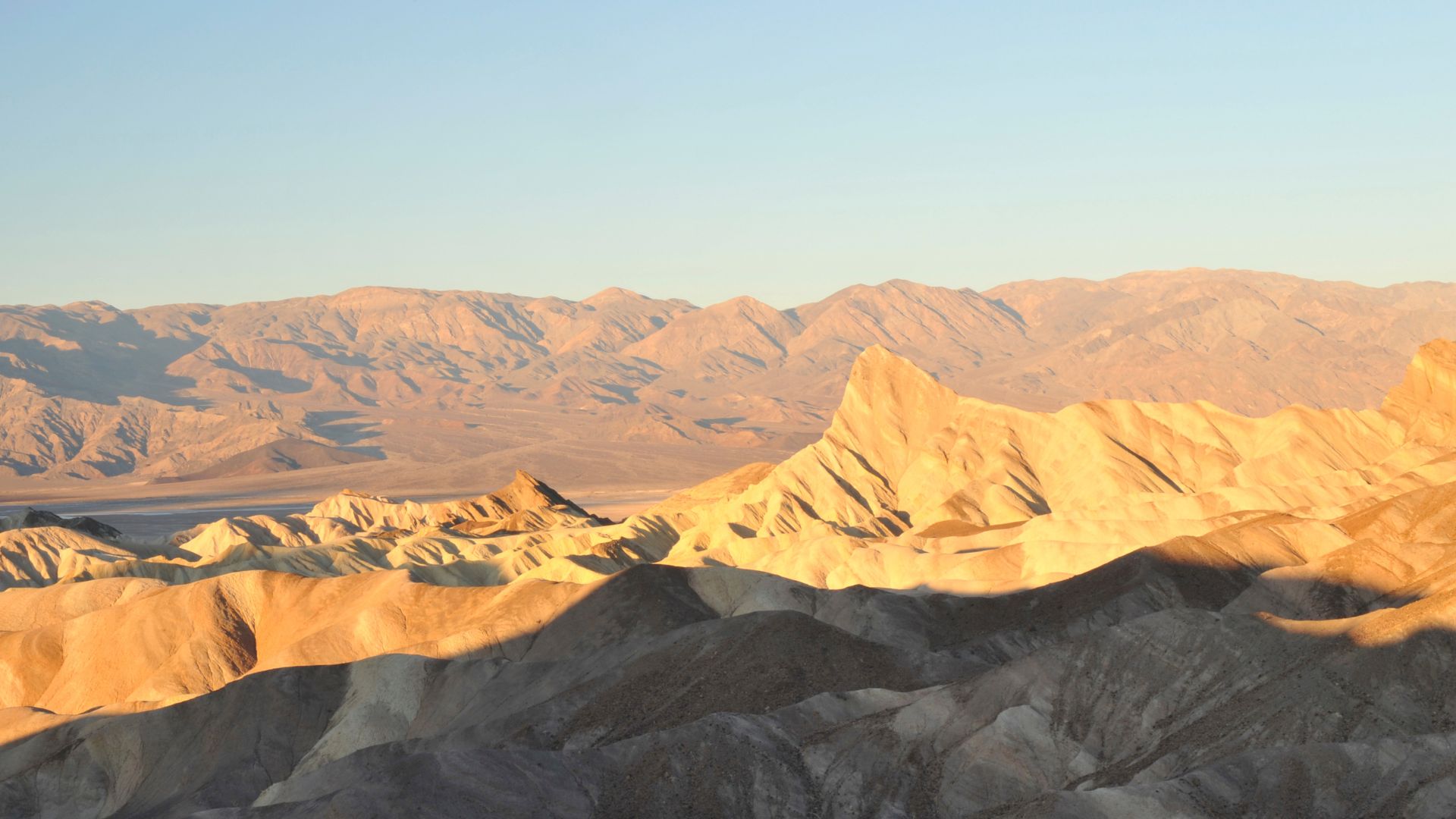
How Light Transforms the Landscape
Sunrise transforms the landscape in minutes. Pre-dawn grays and blues suddenly turn to rich gold and orange as the sun rises.
Long shadows deepen the texture of the badlands, making ridges and gullies pop out in a way they just don’t at midday. As the sun climbs higher, the colors start to fade and everything softens.
I get my best photos in the first 15–20 minutes after sunrise. Watching the change in real time makes me appreciate Death Valley’s wild geology and history.
Essential Visitor Information
Whenever I plan a sunrise trip to Zabriskie Point, a little preparation goes a long way. Parking, fees, and amenities can make or break the experience.
Parking and Access
Parking is pretty simple. I drive about 15 minutes east from Furnace Creek on Highway 190.
The lot is paved and has spots for regular cars and larger vehicles. If I’m coming for sunrise, I try to get there early since the lot can fill up, especially on busy weekends in spring and fall.
Accessible parking sits close to the trailhead for those who need it. The viewpoint is just a short ¼-mile (about 400 meters) walk up a paved path.
If I’m feeling adventurous, trailheads for the Badlands Loop and other hikes start right here. The lot stays open 24/7, so I can show up as early as I want.
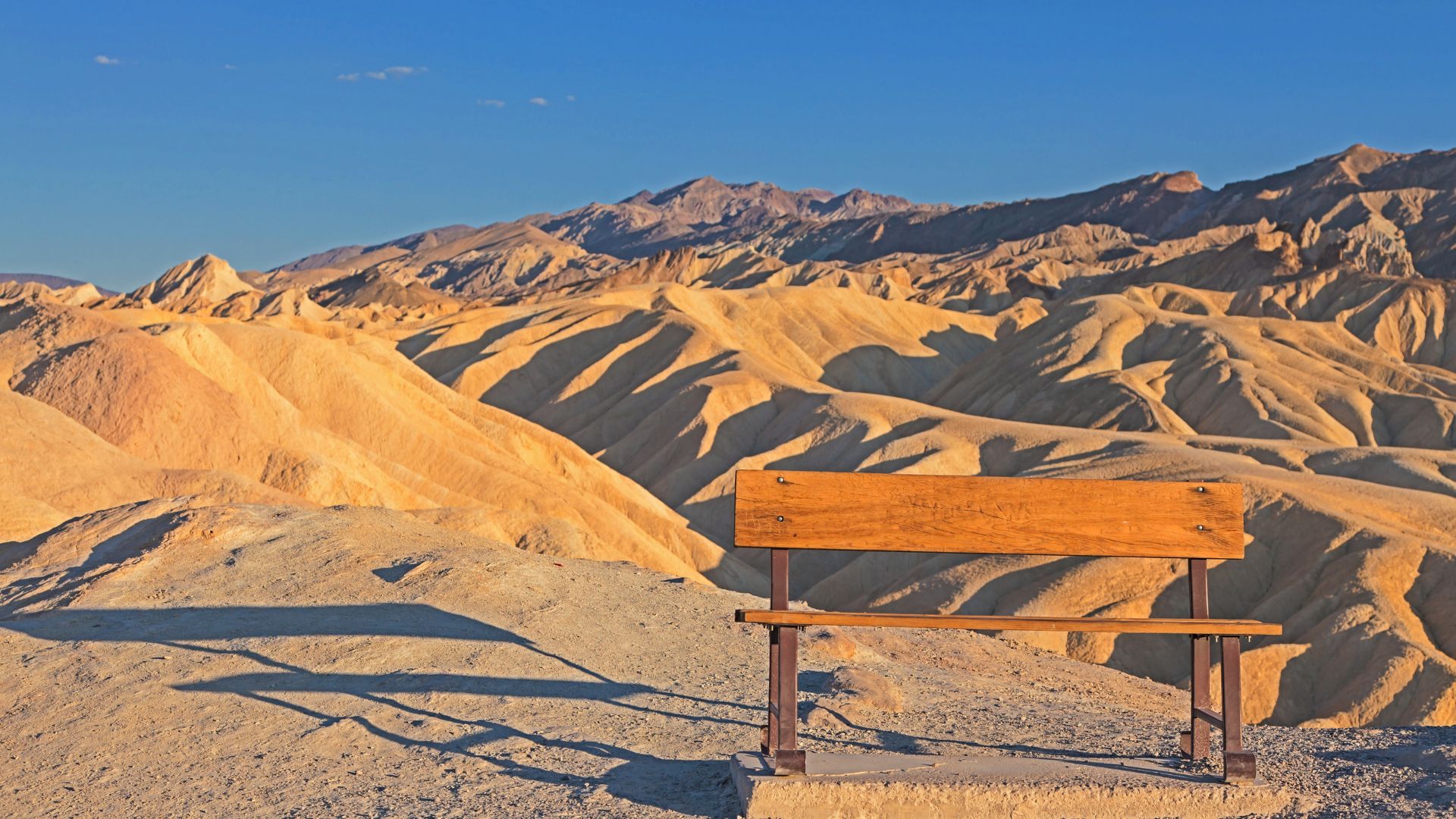
Amenities and Facilities
Zabriskie Point keeps things basic. There are vault toilets in the parking area, but no running water or regular restrooms.
I always bring my own water—Death Valley’s dry air sneaks up on you. No stores or food services are nearby, so snacks and extra hydration are a must.
The closest services, like gas and visitor centers, are in Furnace Creek, about a 15-minute drive away. Benches and a shade structure at the viewpoint give me a spot to rest.
There aren’t any trash bins up at the overlook, so I carry out whatever I bring in.
Entrance Fees and Passes
Death Valley National Park charges an entrance fee when you drive in. As of 2025, it’s $35 per private vehicle and $25 per motorcycle.
You can get an annual Death Valley pass for $55. If I plan to visit several parks, I usually buy the America the Beautiful pass for $80—it covers over 2,000 federal recreation sites.
I pay fees at self-serve kiosks, online, or at visitor centers like Furnace Creek. I always display my pass or receipt on the dashboard to avoid any issues.
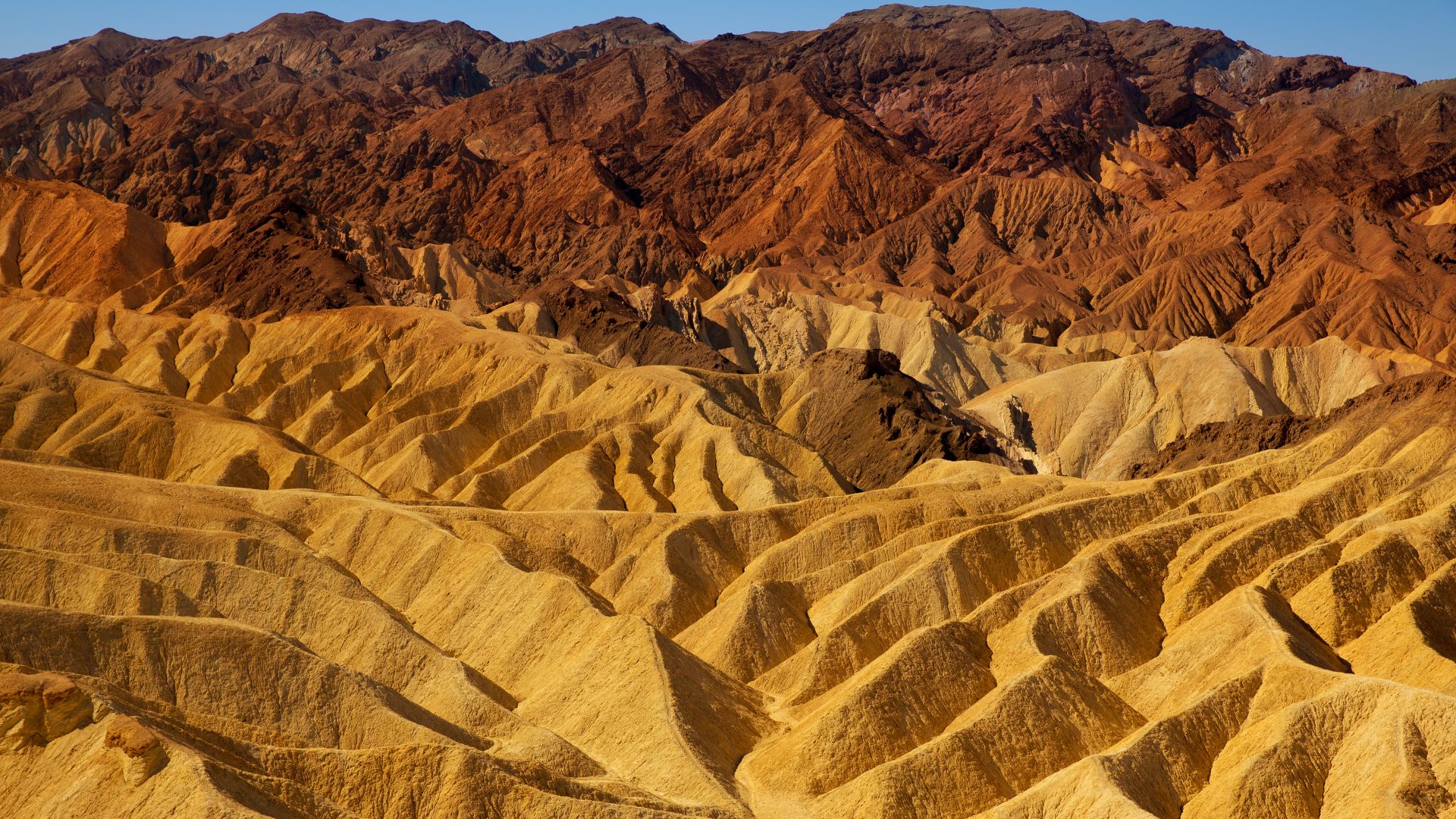
Hiking and Exploring the Surroundings
Zabriskie Point isn’t just about sunrise. It’s also a jumping-off point for some of Death Valley’s best hiking trails.
These trails get me right into the colorful badlands and up close to dramatic landmarks.
Badlands Loop Trail
The Badlands Loop Trail starts right at Zabriskie Point. It’s about 2.7 miles round trip and not too hard.
The path dips into winding valleys and weaves through golden, eroded hills. Along the way, I watch the colors shift from bright yellows to deep oranges and browns.
There’s almost no shade, so I always bring plenty of water and wear sun protection. The trailhead is easy to find and marked on park maps.
I can hike it clockwise or counterclockwise, and it loops back to the main overlook—perfect if I’m short on time.
Golden Canyon and Gower Gulch Trails
Golden Canyon Trail is a classic hike near Zabriskie Point. I usually start at the Golden Canyon trailhead, just a short drive away.
The hike to Red Cathedral is about 3 miles round trip, great for a half-day outing. The trail stays pretty easy, though it gets steeper near the end.
The path leads through tall, narrow canyon walls that seem to glow at sunrise. Sometimes, I connect to the Gower Gulch Trail for a loop.
The full Golden Canyon–Gower Gulch loop is about 4.3 miles. It winds through colorful rock layers and rugged gullies.
Trail markers aren’t always obvious, so I bring a map and pay attention at junctions.
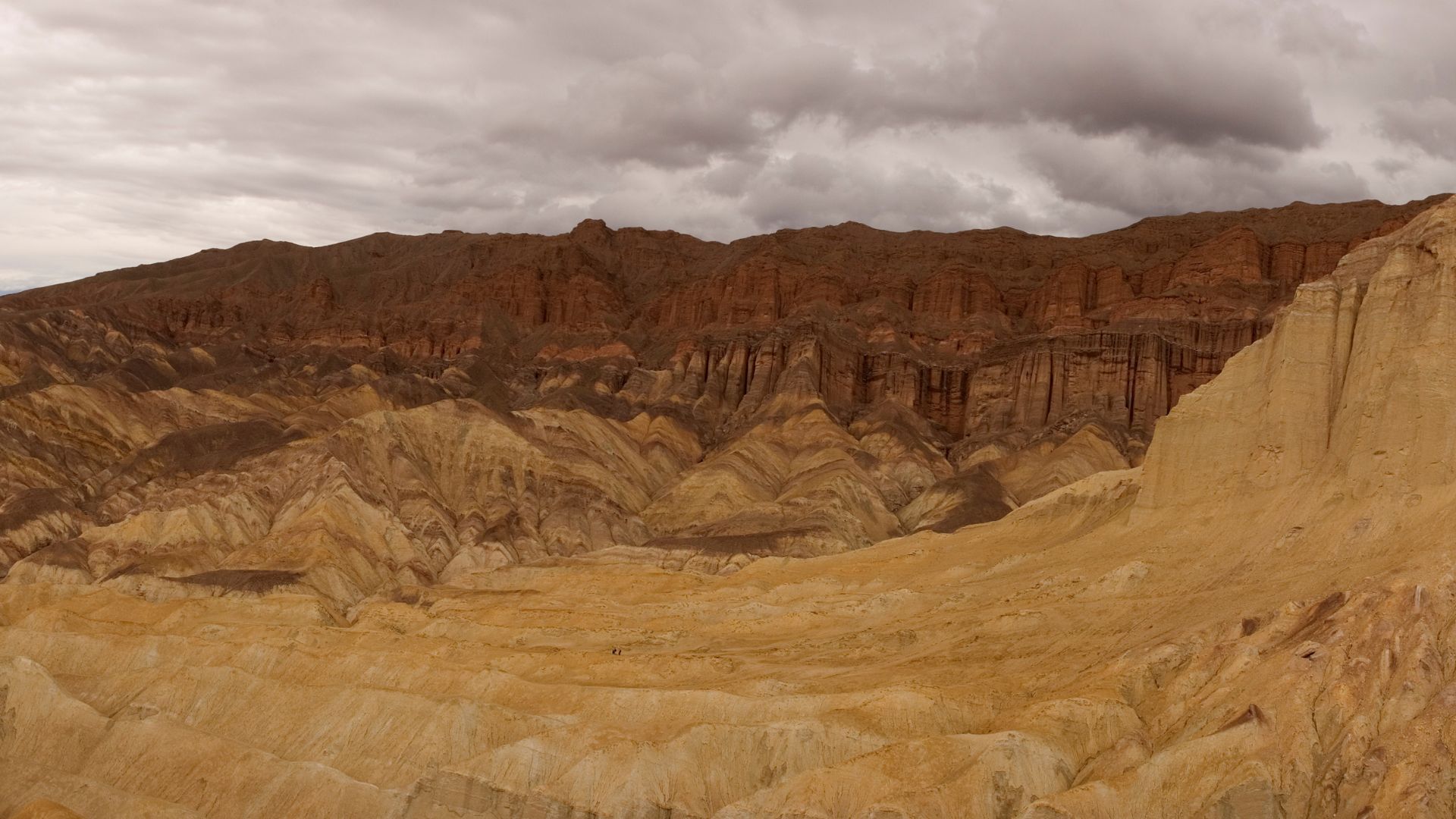
Exploring Manly Beacon and Red Cathedral
Manly Beacon is that sharp, pointed peak you see from the overlook. Hiking closer gives me a better look at its craggy edges and sweeping views back toward the valley.
Reaching Red Cathedral is another favorite. The path from Golden Canyon climbs up to the base of its red rock cliffs.
The last bit involves a bit of scrambling up a narrow wash, but the deep red walls are worth the effort. The area around Manly Beacon and Red Cathedral shows off Death Valley’s wild geology.
I always check current maps and trail conditions at the visitor center before heading out—summer heat and flash floods can change things fast.
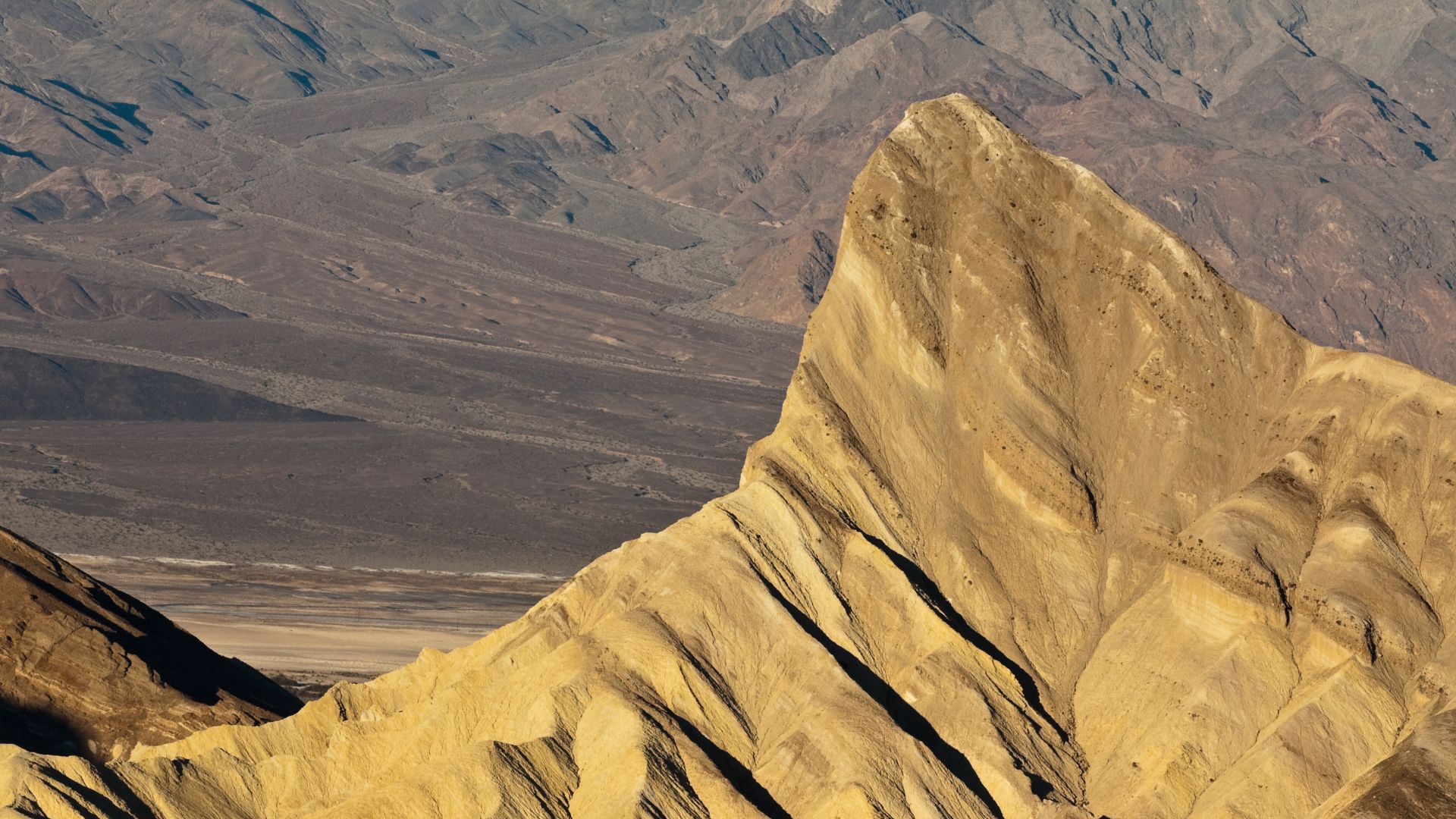
Tips for an Unforgettable Sunrise Experience
Sunrise at Zabriskie Point can be breathtaking, but a little planning makes it even better. I’ve learned a few tricks over the years that help me get the most out of the morning.
Photography Tips
I always show up at least 30 minutes before sunrise. That gives me time to pick a spot and set up my camera.
The light changes quickly, so I set my camera to manual mode ahead of time. A tripod is a must for low-light shots.
I take a few test photos to tweak exposure and focus. Wide-angle lenses work well for the sweeping views of the Badlands and Manly Beacon.
Colors shift fast, so I just keep shooting as the sun comes up. Sometimes, the best light isn’t when you expect it—just before or just after sunrise can be magic.
Extra batteries and a lens cloth help with the desert dust.
Beating the Crowds
Zabriskie Point gets busy at sunrise, especially on weekends or holidays. I get there early to snag a good spot.
Parking is usually available if I arrive ahead of the rush, but it fills up quickly on busy days. For a quieter vibe, I come on a weekday or wander a bit down the trail beyond the main overlook.
That way, I still get the view but avoid the biggest crowds. Bringing a camping chair or something comfy to sit on makes the wait easier.
I pack snacks and water before leaving the car so I don’t have to go back and forth.

Staying Safe and Comfortable
Even in Death Valley, sunrise can be chilly. I dress in layers and bring a hat, sunscreen, and sunglasses for when the sun gets higher.
Water is non-negotiable. I always carry more than I think I’ll need. Simple snacks keep my energy up if breakfast is still a ways off.
The trail can be uneven, so I wear sturdy shoes. If I arrive in the dark, a small flashlight or headlamp is a lifesaver.
Nearby Attractions and Local History
Sunrise at Zabriskie Point is just the start. The area nearby has plenty to explore, with a rich backstory and some surprising sights.
Furnace Creek and Visitor Center
Furnace Creek serves as the main hub for Death Valley visitors. I usually start my trips here since it’s close to Zabriskie Point and has essentials like food, water, and lodging.
The Furnace Creek Visitor Center is super helpful, with park rangers, maps, and exhibits about Death Valley’s geology, wildlife, and climate.
They keep updated info on trail conditions and safety alerts, which matters in harsh environments. For lodging, The Inn at Death Valley offers a historic, upscale stay, while The Ranch at Death Valley is more casual and family-friendly.
Furnace Creek sits right along Highway 190, making it easy to reach other park highlights. There’s also a small museum, picnic spots, and plenty of parking.
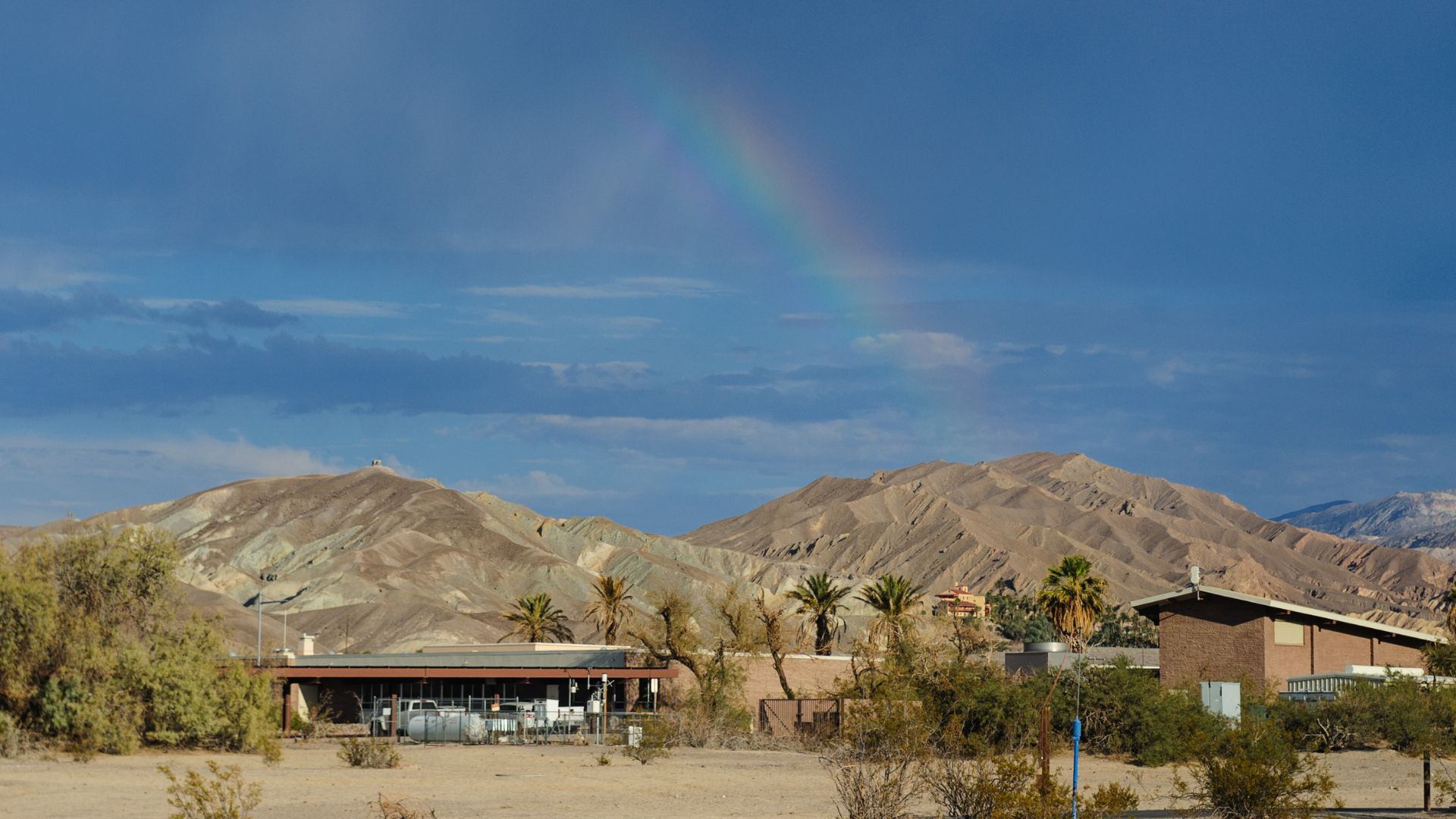
The Legacy of Christian Zabriskie and Gold Rush Pioneers
Zabriskie Point takes its name from Christian Zabriskie of the Pacific Coast Borax Company. His leadership in the early 1900s shaped the area’s identity.
Old mining sites dot the nearby hills—silent reminders of those days. Back in the late 1800s, gold rush pioneers and prospectors crossed these lands chasing fortune.
You can spot their influence in place names, abandoned equipment, and stories at the Visitor Center’s history displays. The Pacific Coast Borax Company played a huge role here—borax mining put Death Valley on the map long before it became a national park.
When I wander around Furnace Creek and the surrounding hills, I see traces of this legacy everywhere. Learning about these pioneers makes me appreciate just how tough life was out here.
Iconic Sights: Artist’s Palette, Salt Flats, and Beyond
After leaving Zabriskie Point, I usually hop onto Highway 190 for a scenic drive to some of Death Valley’s other big highlights. Artist’s Palette always catches my eye with its wild bursts of color—those mineral deposits really put on a show.
The drive doesn’t take long. There are a bunch of pullouts where you can stop, snap some photos, and just take in the view.
Badwater Basin Salt Flats is another spot I never miss. It’s the lowest place in North America, and the white salt stretches out forever.
I love getting there early, just after sunrise, or catching the sunset. The light at those times throws crazy shadows and makes the salt look almost otherworldly.
From certain angles, you can spot the Panamint Mountains in the distance. The contrast between those rugged peaks and the flat, bright salt is just unreal.
I usually make time for stops like Devil’s Golf Course and Harmony Borax Works. Both spots have their own quirky charm and a bit of history to soak up.
There are also a few short trails if you feel like stretching your legs. Each place shows off a different side of Death Valley’s geology—honestly, I’m always surprised how diverse it all feels.
